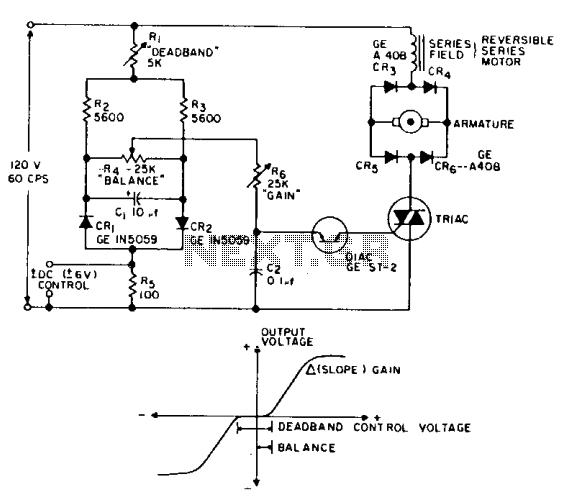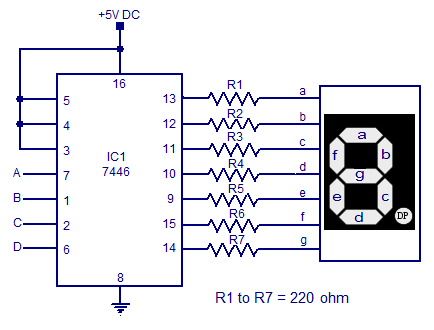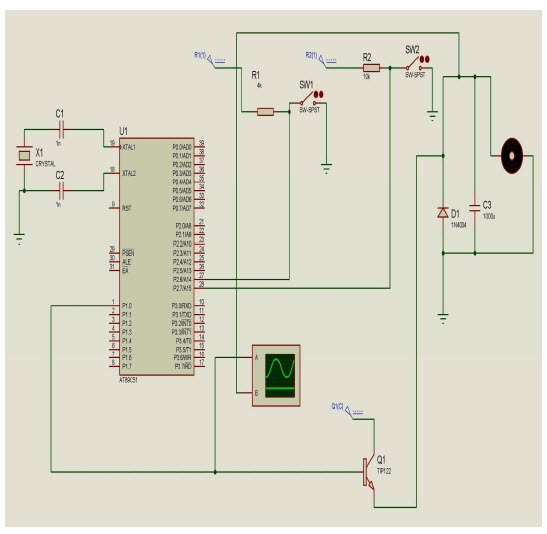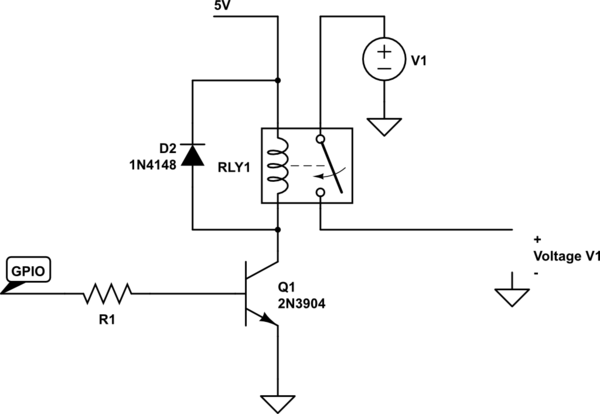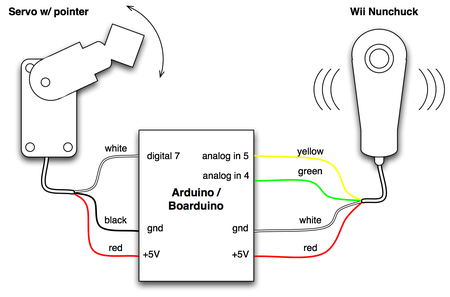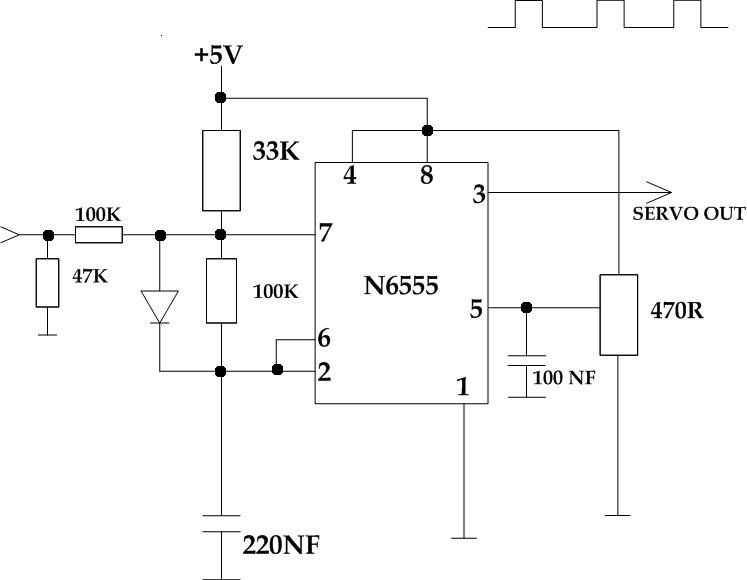
DC servo motor driver with MC33030
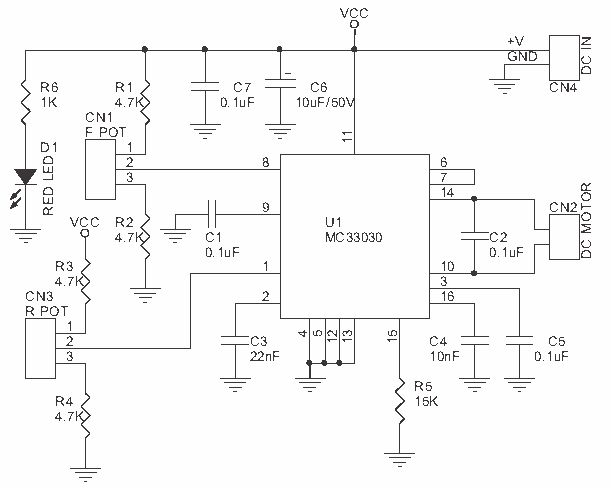
DC Servo Motor Driver kit, designed using MC33030 IC, is the fastest and low cost way of getting your DC Servo Motor up and running. More: Input - 12 VDC Output - can drive up to 1 A Load Overcurrent shutdown, overvoltage shutdown Programmable reference input Power-On LED indicator Relimate connector for interfacing the kit Four mounting holes of 3.2 mm each PCB dimensions 45 mm x 54 mm
The DC Servo Motor Driver kit utilizes the MC33030 integrated circuit, which is specifically designed for driving DC motors. This circuit is optimized for efficiency and cost-effectiveness, making it suitable for various applications requiring precise motor control. The kit operates with a 12 VDC input, allowing it to deliver a maximum output current of 1 A, which is sufficient for driving small to medium-sized DC servo motors.
Key features of the driver include overcurrent and overvoltage shutdown mechanisms. These protective features ensure that the circuit can safeguard the motor and itself from damage due to excessive current or voltage conditions, thereby enhancing reliability and longevity. The programmable reference input allows for fine-tuning the motor's performance, enabling users to adjust parameters such as speed and torque according to specific requirements.
The kit includes a Power-On LED indicator, providing visual confirmation of the circuit's operational status. This feature is particularly useful during troubleshooting and monitoring of the system. The use of a relimate connector facilitates easy interfacing with other components or systems, promoting flexibility in design and implementation.
The printed circuit board (PCB) is designed with four mounting holes, each measuring 3.2 mm, allowing for secure installation in various enclosures or applications. The compact dimensions of the PCB, measuring 45 mm by 54 mm, make it suitable for integration into space-constrained environments while maintaining accessibility for adjustments and connections. Overall, this DC Servo Motor Driver kit presents a robust solution for efficient motor control in a variety of electronic projects.DC Servo Motor Driver kit, designed using MC33030 IC, is the fastest and low cost way of getting your DC Servo Motor up and running. Input - 12 VDC Output - can drive upto 1 A Load Overcurrent shutdown, overvoltage shutdown Programmable reference input Power-On LED indicator Relimate connector for interfacing the kit Four mounting holes of 3.2 mm each PCB dimensions 45 mm x 54 mm 🔗 External reference
The DC Servo Motor Driver kit utilizes the MC33030 integrated circuit, which is specifically designed for driving DC motors. This circuit is optimized for efficiency and cost-effectiveness, making it suitable for various applications requiring precise motor control. The kit operates with a 12 VDC input, allowing it to deliver a maximum output current of 1 A, which is sufficient for driving small to medium-sized DC servo motors.
Key features of the driver include overcurrent and overvoltage shutdown mechanisms. These protective features ensure that the circuit can safeguard the motor and itself from damage due to excessive current or voltage conditions, thereby enhancing reliability and longevity. The programmable reference input allows for fine-tuning the motor's performance, enabling users to adjust parameters such as speed and torque according to specific requirements.
The kit includes a Power-On LED indicator, providing visual confirmation of the circuit's operational status. This feature is particularly useful during troubleshooting and monitoring of the system. The use of a relimate connector facilitates easy interfacing with other components or systems, promoting flexibility in design and implementation.
The printed circuit board (PCB) is designed with four mounting holes, each measuring 3.2 mm, allowing for secure installation in various enclosures or applications. The compact dimensions of the PCB, measuring 45 mm by 54 mm, make it suitable for integration into space-constrained environments while maintaining accessibility for adjustments and connections. Overall, this DC Servo Motor Driver kit presents a robust solution for efficient motor control in a variety of electronic projects.DC Servo Motor Driver kit, designed using MC33030 IC, is the fastest and low cost way of getting your DC Servo Motor up and running. Input - 12 VDC Output - can drive upto 1 A Load Overcurrent shutdown, overvoltage shutdown Programmable reference input Power-On LED indicator Relimate connector for interfacing the kit Four mounting holes of 3.2 mm each PCB dimensions 45 mm x 54 mm 🔗 External reference
